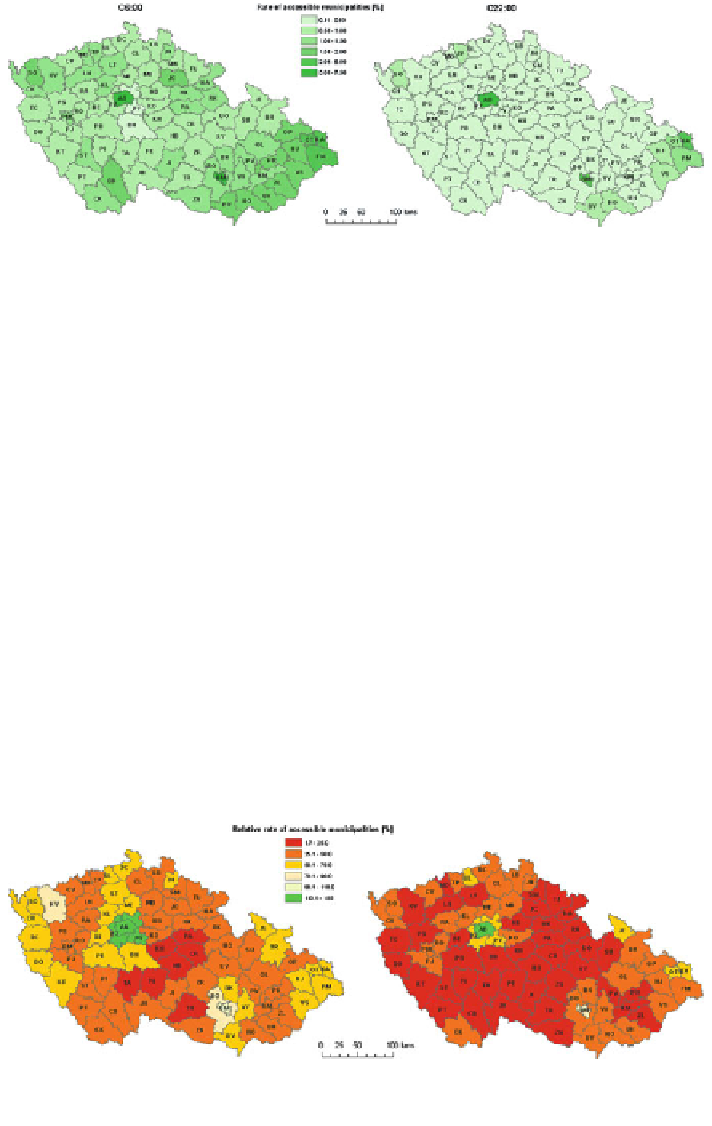Geoscience Reference
In-Depth Information
Fig. 3 Average rate of accessible municipalities (RA) aggregated to level of Czech districts
(LAU1) at 4:30
-
5:45 (left) and 20:30
-
21:45 (right)
regions with better accessibility for night-shift commuting corresponds to regions
with higher levels of employers with multi-shift operation (mostly NW, NE and
central areas).
Figure
4
depicts the changes of the rate of accessible municipalities (RA) from
early morning to late morning and to evening. For commuting at 9 o
'
clock, only
three regions indicate an increase of accessibility
Prague and surrounding districts
(AB, PZ, PY) what may correspond to later starts of working hours. Very low
changes in accessibility are evident in Brno and its surrounding (BM, BO) and
surprisingly also in Karlovy Vary district (KV). Small decrease of accessibility
(about 10
—
30 %) is found in the NE part of the CR (Moravian-Silesian region),
partially in the SE part of the CR, western border regions and central Bohemia. Vice
versa, a central part of the CR (near regional borders of Vyso
-
ina, South Moravia,
South Bohemia and Pardubice region) shows a substantial drop of the accessibility
level (RA
9
č
is more than 4 times smaller than RA
6
). Results for commuting at 22
o
shrinkage of well serviced areas
around Prague (AB) and Brno (BM), persisting better situation around Ostrava
(OV) and overall substantial decreasing of accessibility in almost all other districts.
'
clock provide generally similar spatial pattern
—
Fig. 4 Relative rate of accessible municipalities aggregated to level of Czech districts (LAU1) for
time interval 7:30
8:45 (left) and for the time interval 20:30
21:45 (right) related to the results for
-
-
time interval 4:30
5:45 (in %)

Search WWH ::

Custom Search